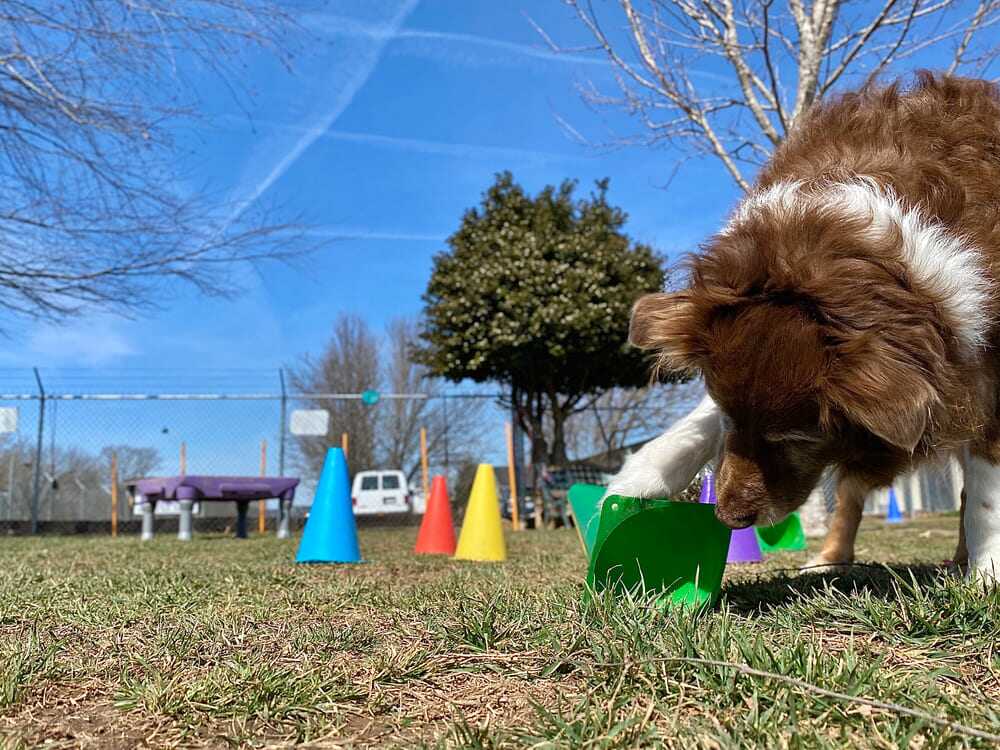Training a dog is easy if you apply the proper methods. In addition to always having the same attitude, you must ensure that the pup’s environment is adapted to its needs.
Next, you have to take into account the dog’s personality. Dog training and learning are evolved techniques based on the dog’s and its owner’s needs. In this article, we will learn 25 tips for training your dog perfectly.
25 Dog Training Tips And Techniques
We all want to have the perfect dog—someone we can take with us everywhere, someone who makes us proud, someone who knows how to react in every situation, and someone who never disobeys our instructions.
However, training a dog, like any other animal, requires involvement and time. Here are some tips to optimize your training sessions, better understand your dog, and develop a great relationship with him through training!
- Maintain the Health of Your Dogs:
Nobody enjoys working or training, and Wendy enjoys working or travelling well. Your pup’s well-being and well-being are your top priorities as a parent.
Careful observation and routine veterinary appointments will help ensure you know of any possible issues.
Never, ever leave your dog alone in a dangerous area. Poisonous plants, animals, and colourful thorns and algae are the most frequent threats. If your dog exhibits disease symptoms, ask your veterinarian instead of posting your inquiry on social media.
- Establish a Puppy Training Schedule:
Dogs are accustomed to the schedule. Make the most of this attribute by including learning and crate training into your puppy’s everyday training routine.
For instance, I name everything new we see on our walks, like ducks, as soon as I see it. You’ll eventually realize that this spontaneous workout regimen has become ingrained in your routine. Additionally, it’s an excellent habit to develop and learn before teaching.
- Educate Each Technique Separately:
Don’t go into a puppy training session with inflated expectations. Begin by introducing one command or behaviour at a time.
Your dog will likely become confused, and you will become frustrated if you attempt to teach them two or three new instructions at once. In dog obedience training, the saying that “quality over quantity” is true is accurate.
- Make Sure Sessions Last A Comfortable Amount of Time:
Stay underdo the duration of your workouts. Some picky dogs and young puppies cannot withstand too much training at once.
When you begin to sense agitation or apathy, end the session. If your dog remains enthusiastic, proceed with the clicker training. Always come to a joyful reinforcement and upbeat conclusion.
- Reward Treats Your Dog:
When your young dog obeys and respects instructions, you must reward-based train him. To do this, you can treat him so he will want to start again. You can also praise him, pet him, or play with him. If you reward your dog, he will want to behave well as often as possible.
- Show Consistency:
Training a pup requires consistency. If your dog obeys, you must reward him. If he does not follow, you must be firm. We must always have the same attitude.
If you forbid part of the house to your companion, you should keep the rules the same for a day. Your dog would lose its bearings, and you would have difficulty getting back on top of the world.
- Meet Your Puppy’s Needs:
A pup has different needs from an adult dog that lives on a farm or in a house. Of course, he needs to be fed, and you also need to take him out regularly.
But that’s not all! You must also play with him for his well-being. This learning helps stimulate him and allows him to develop well.
It would help if you also cuddled him. Remember that a few days or weeks ago, his mother protected him. Today, he needs you! The more time you spend with your pup, the stronger your bond will be.
- Banish Violence:
It would help if you never violently abused your puppy. Even if he does something foolish, you shouldn’t hit him. The risks are significant.
Your dogs may be afraid of you. He won’t be able to link, and you won’t be able to share anything with him. Sometimes, as they grow up, dogs can become aggressive with you and household members.
If you have children, you need to educate them. Explain to them that you should never hurt a dog. Even if this violence is unintentional, your dogs may react with violence and bite. Always keep positive reinforcement.
- Choose the Optimal Environment:
Specific instructions are best trained in a dedicated training space, but according to AKC, most training may be done anywhere: at home, in the park, etc. Marking off the practice area with an 8-panel x pen is a simple way to create a practice zone.
You might also use an additional room if you have a lot of space. The primary concept is that the training area be small and devoid of eyes and sounds that could distract participants.
Acquaint your dog with the surroundings before starting training. You can accomplish this by playing in the area or offering him snacks.
- Take Away Distractions:
The basics of dog training are challenging tasks in themselves. Avoid making it more difficult by practising in a distracting atmosphere.
The training area should be free of pets, other dogs, and loud noises. Distractions from images should also be considered. Try to locate a sufficiently isolated place to receive as much attention as possible.
- Start With Obedience Training:
The four most crucial instructions for compliance are “Come, sit, stay, and sit.” Ensure your dog or puppy has mastered each command before introducing them to others. Not just any master, but an all-encompassing master. If your dog complies with these four orders all the time, it could be the difference between a long and happy life that is cut short by an accident or escape.
- Identifying Severe Anxiety:
It might be challenging to identify low anxiety in dogs, mainly if you did not raise them as puppies. Dogs with little anxiety may seem normal on the outside, yet they are constantly uncomfortable.
This discomfort not only makes dog training more challenging but is also bad for your dog’s health. The first step in treating this kind of anxiety is identifying the trigger.
The most frequent triggers were loud noises, items like vacuum cleaners, and even particular individuals or animals. To assist your dog in overcoming his fear, locate the trigger, remove it, and then try desensitization or classical conditioning methods.
- Acknowledge Aggression And Take Prompt Action:
Dog aggression is a serious problem that must be addressed immediately. The terrier is most prone to aggression. If your puppy exhibits aggressive behaviours, these must be trained out.
If the hostility is moderate, dog training with classical conditioning, operant conditioning, and desensitization might be beneficial. If this hostility persists, you may need professional help.
As soon as you can, get therapy since aggressive issues might raise your risk of injury and chronic stress. In this case, we advise you that you will also need insurance. Things are only going to get worse, so don’t delay.
- Establish Trust, Affection, and Respect:
Building respect, affection, and trust with your puppy or dog is crucial before you start serious dog training basics.
For recently adopted or rescued dogs, this is highly crucial. If your dog is uncomfortable around you, he won’t be interested in learning new instructions. It would help if you first persuaded them. To do this, treat the dog with kindness and patience.
Find out what your dog enjoys and finds bothersome, then concentrate on ensuring he feels comfortable and content in his new surroundings. This is very important for your pup’s welfare.
- Make Sure The Commands “Sticks”:
Every instruction you teach your dog should eventually “stick” to him. This indicates that your dog will almost always comply with the command, Whatever, wherever, or whenever.
This dog will sit when instructed, regardless of how noisy and unruly they are. Expert instructors refer to this as “obeying” the directive.
You can progress to more challenging ones if a dog has demonstrated consistency with one instruction. However, it’s more complex and frustrating to train your dog to regress if you switch up the instructions too soon rather than sticking with the initial one.
- Seek Ways To Consistency And Perfection:
This may seem like common sense, but many dog owners need to follow both of these things. This will result in more difficult dog training in the future. For example, sitting is a relatively easy and basic command. Many owners may think that once the dog has done it a few times, they are fully trained in this command.
- Consider The Tone of Your Voice:
Your tone of voice conveys essential information about what you are saying to your dog. It’s crucial to use diverse tones of voice when giving instructions, compliments, and corrections throughout dog training sessions.
If you offer your dog instructions and praise in a monotone, comprehending what you want will be much more challenging. Consider using a low tone for corrections, a high tone for appreciation, and a calm tone for commands.
You will ultimately discover that some voice kinds are more effective than others at communicating with your dog.
- No Must Imply No:
Your dog must immediately know that no is no, no, not at all. No should always equate to NO. Training your dog to obey once they understand that no is unacceptable to a dog trainer will be more straightforward.
Furthermore, your dog will know better what is and is not anticipated if they understand what “no” means. Use a firm, firm tone when you answer no. There are instances when sterner, louder “no’s” are required, depending on the circumstance.
- Use Simple Language And Methods:
Since your dog understands human language poorly, making basic commands as simple as possible is necessary. Commands with one or two syllables are the most effective. Instead of “step back,” say “push over.” Or instead of “turn around,” use “turn” instead. Also, be consistent and use the exact words all the time. State them clearly and do your best not to confuse your dog with other similar-sounding commands.
- Check Your Dog’s Mood:
Ensure your canine has a suitable attitude and mind before beginning a training session that is longer than a few minutes.
You should only begin teaching your dog if it is relaxed. While some energy is helpful for training, excessive energy is not.
Give your hyperactive dog too much exercise to burn off extra energy. Try playing games with your dog or tempting him with treats that he “might” get if he is sluggish.
- Play or Exercise Before Training:
Getting your dog moving or playing with it before a dog training session helps burn off extra energy. This is particularly true for young puppies and active canines. Since each dog is unique, you should watch your dog’s behaviour problems and modify the length of your walk, dog sports, or exercise sessions accordingly.
- Determine The Strengths And Weaknesses Of Your Dog:
Understanding that every dog is unique and has strengths and weaknesses is crucial. When you find it challenging to train, don’t give up. It doesn’t necessarily follow that your dog will be a modern-day Lassie just because you’ve previously owned one. Three crucial traits are empathy, persistence, and patience.
- Leverage The Allure To Facilitate Learning:
Treats and toys work well as “bait” to assist your dog in comprehending the order. This is one of the tricks you can use.
They can be used to orient the dog or to have it follow the bait’s body or eyes. The commands sit, down, place, and spin benefit from the lure technique.
However, we can’t “deceive.” Ultimately, it would help if you quit luring so the dog learns to obey the command without needing the lure.
- Make Use of Proper Body Language:
Another means of communication with our pets is through body language. As with vocal sounds, consistency in the trainer’s body language is critical for improved comprehension.
Your dog is unlikely to take you seriously if you’re sprawled on the couch and preparing to issue a harsh instruction or reprimand. Instead, you should give the order firmly while standing or sitting upright. These minor nuances add up to a lot.
- Feed Healthy Food At Home:
Give your growing puppy the best and most healthy food your budget will allow. Proper diet is essential for proper body and brain development.
Dog owners are currently inundated with contradicting information regarding dog foods, much of which is undoubtedly fantasy but may contain some facts.
Businesses typically experience problems with product openness when revenues are involved. You are responsible for conducting well-informed research to determine what is most appropriate to feed your dog.
Conclusion:
I hope these tips can help you have a better-trained dog, that you enjoy the dog training process by having more realistic expectations, that you no longer see your pup’s mistakes as a personal defeat, and that you can recognize your pet’s needs by making compromises!


